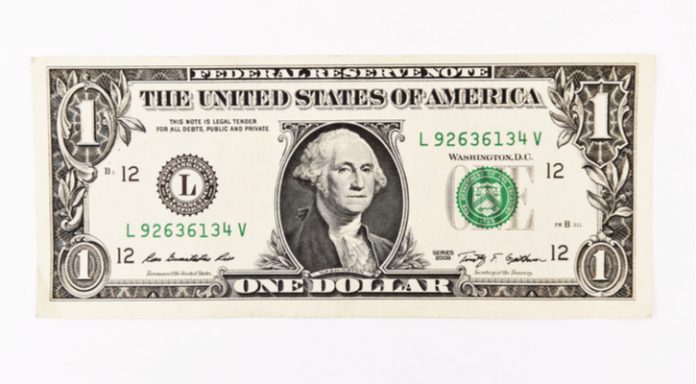Confirmation from the government that EU migrants can stay in the UK, even if there is a no deal Brexit, helped boost the pound. Meanwhile optimism surrounding trade talks between US and China brought the dollar lower. The pound US dollar exchange rate hit a peak of US$1.2790, its highest level in almost a week.
| What do these figures mean? |
|---|
|
When measuring the value of a pair of currencies, one set equals 1 unit and the other shows the current equivalent. As the market moves, the amount will vary from minute to minute. For example, it could be written: 1 GBP = 1.28934 USD Here, £1 is equivalent to approximately $1.29. This specifically measures the pound’s worth against the dollar. If the US dollar amount increases in this pairing, it’s positive for the pound. Or, if you were looking at it the other way around: 1 USD = 0.77786 GBP In this example, $1 is equivalent to approximately £0.78. This measures the US dollar’s worth versus the British pound. If the sterling number gets larger, it’s good news for the dollar. |
The pound started the new week on the front foot as investors focused on Brexit developments. The UK government reassured that it would allow EU migrants to remain in the UK even if the UK crashes out of the EU without a deal. This show the UK government is attempting to addresses the issue of a potential labour shortage in the case of a no deal exit.
If there are insufficient workers to support economic activity, which could happen after Brexit as immigration decreases and emigration increases the economy is likely to slow. This would be bad news for the pound. Therefore, news reassurances that the EU immigrants are allowed to stay offers some support to not just the public, but businesses as well as the European workforce in the UK is more likely to stay.
Today Brexit will remain a central focus as EU Chief EU negotiator Michel Barnier, meets with EU Brexit Minister Dominic Raab.
| Why is a “soft” Brexit better for sterling than a “hard” Brexit? |
|---|
| A soft Brexit implies anything less than UK’s complete withdrawal from the EU. For example, it could mean the UK retains some form of membership to the European Union single market in exchange for some free movement of people, i.e. immigration. This is considered more positive than a “hard” Brexit, which is a full severance from the EU. The reason “soft” is considered more pound-friendly is because the economic impact would be lower. If there is less negative impact on the economy, foreign investors will continue to invest in the UK. As investment requires local currency, this increased demand for the pound then boosts its value. |
Dollar Lower As Flows Into Safe Havens Ease
The dollar was easing back for a second straight session as investor optimism increased over US — Sino trade talks and the search for safer havens decreased. China is sending a trade delegation to Washington on Wednesday for the two powers to try to find common ground in an attempt to stop the current trade spat. Investors are hopeful that the meeting will be productive and bring a halt to the trade tariffs which each side are levying on each other.
However, economists believe the investor optimism could be ill founded and that there is a strong possibility that there will be no progress from these mid-level talks.
Whilst there is no high impacting economic data due for release today, US dollar traders will be looking towards the release of the minutes from the FOMC meeting earlier this month, which analysts are expecting to be supportive of a hike in September. If so, the dollar could be on the rise again later in the week.
| Why do raised interest rates boost a currency’s value? |
|---|
| Interest rates are key to understanding exchange rate movements. Those who have large sums of money to invest want the highest return on their investments. Higher interest rate environments tend to offer higher yields. So, if the interest rate or at least the interest rate expectation of a country is relatively higher compared to another, then it attracts more foreign capital investment. Large corporations and investors need local currency to invest. More local currency used then boosts the demand of that currency, pushing the value higher. |
This publication is provided for general information purposes only and is not intended to cover every aspect of the topics with which it deals. It is not intended to amount to advice on which you should rely. You must obtain professional or specialist advice before taking, or refraining from, any action on the basis of the content in this publication. The information in this publication does not constitute legal, tax or other professional advice from TransferWise Inc., Currency Live or its affiliates. Prior results do not guarantee a similar outcome. We make no representations, warranties or guarantees, whether express or implied, that the content in the publication is accurate, complete or up to date. Consult our risk warning page for more details.
This article was initially published on TransferWise.com from the same author. The content at Currency Live is the sole opinion of the authors and in no way reflects the views of TransferWise Inc.





